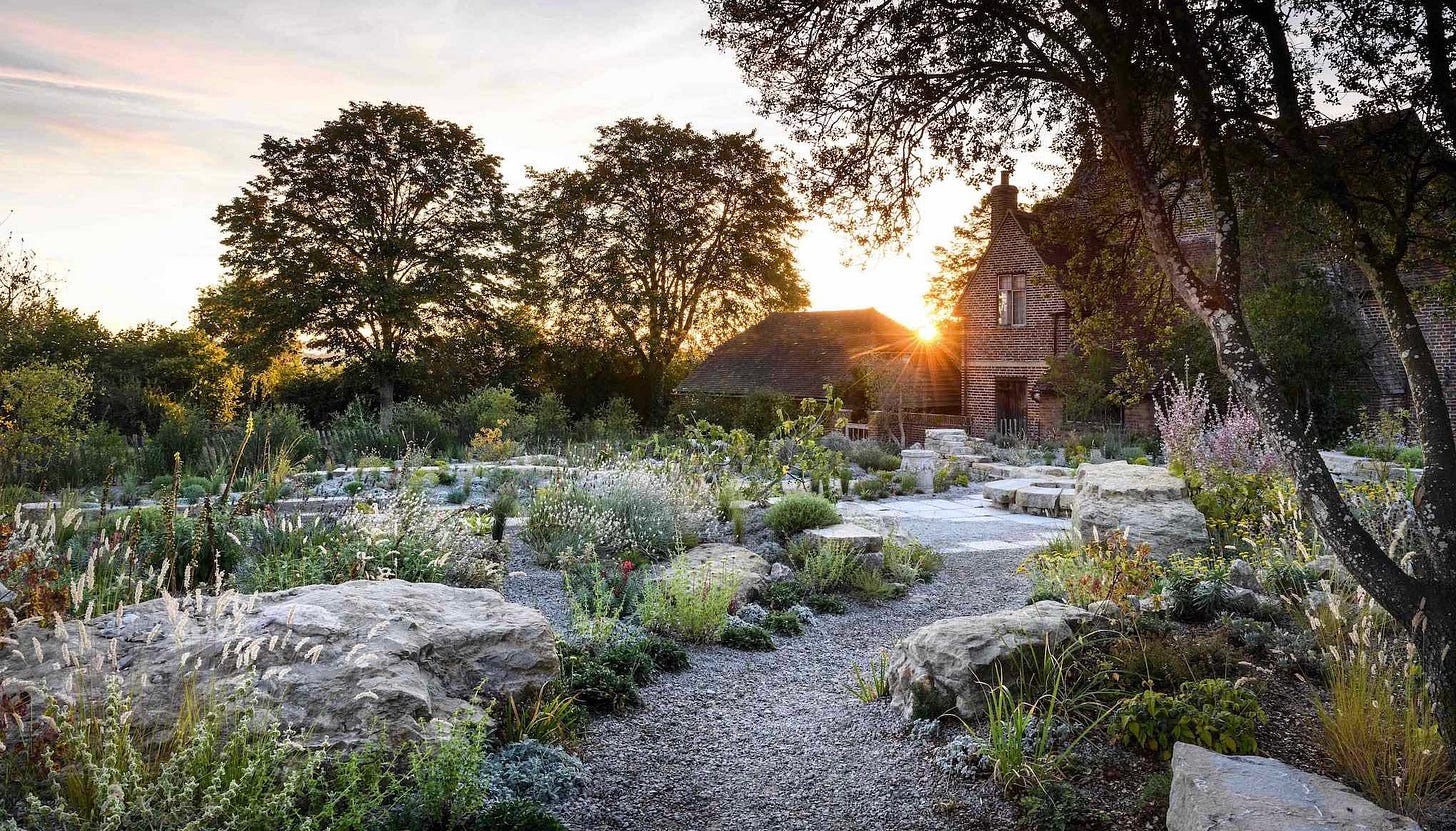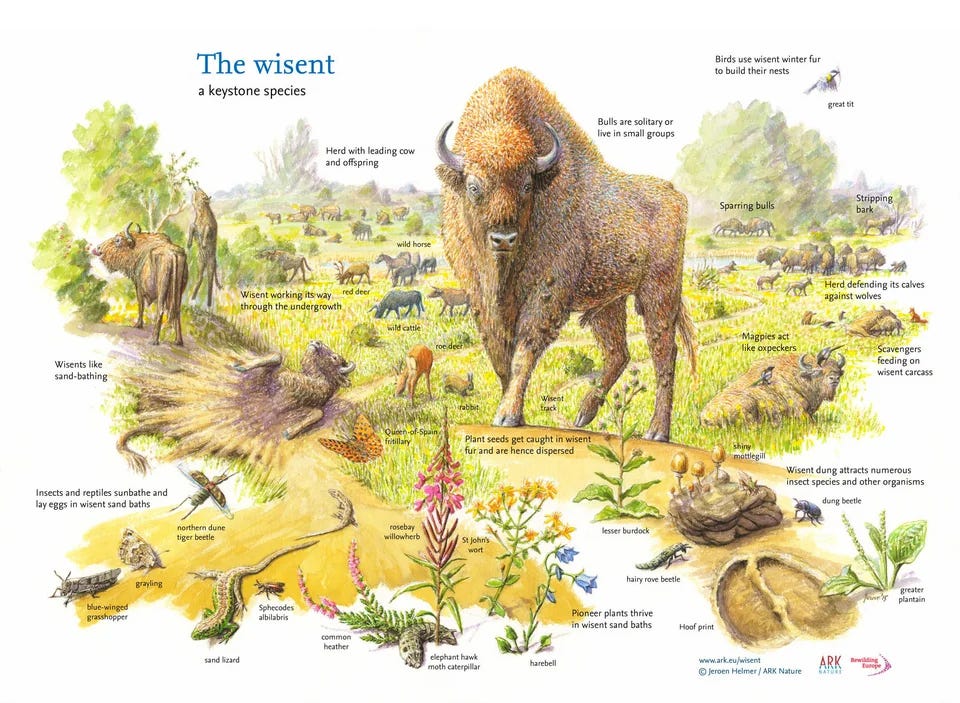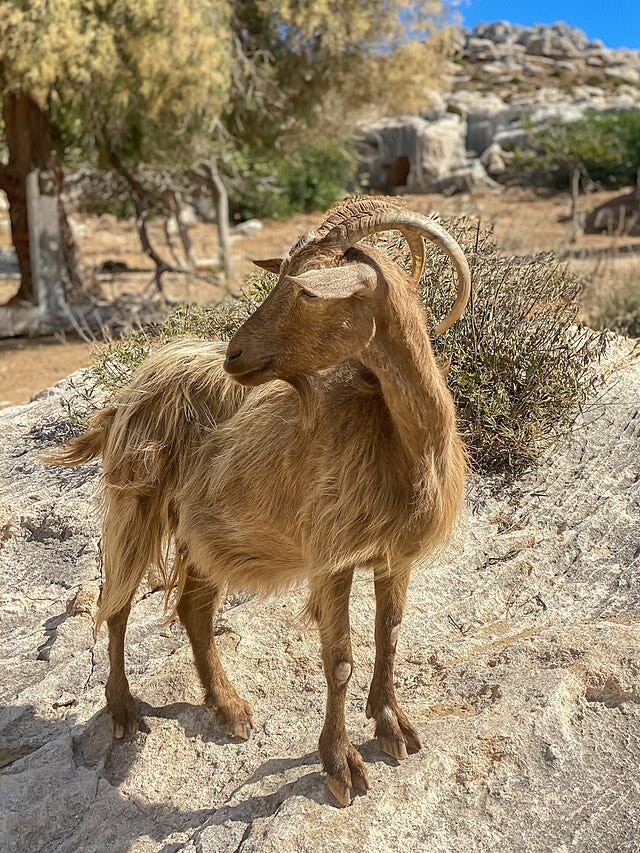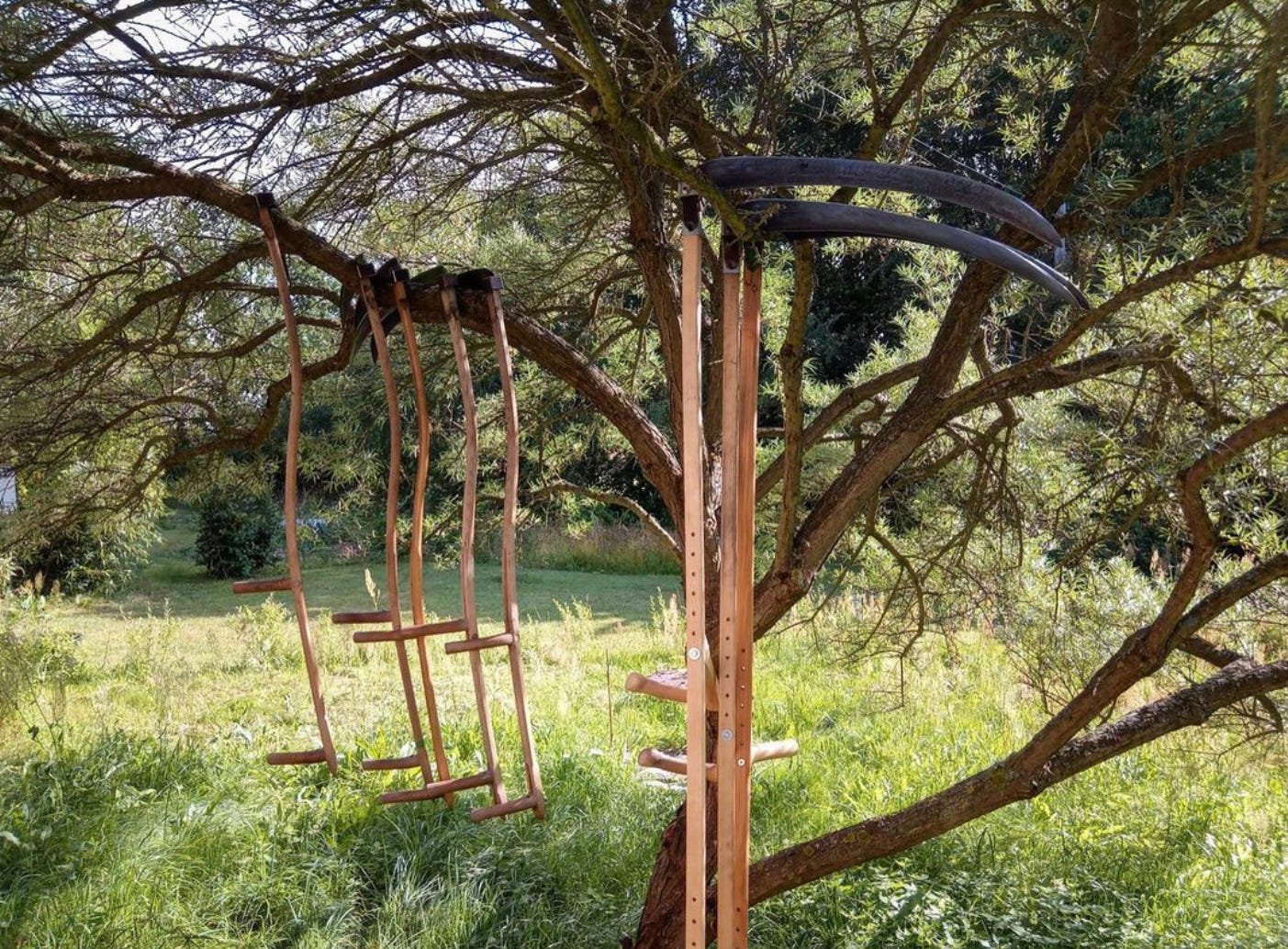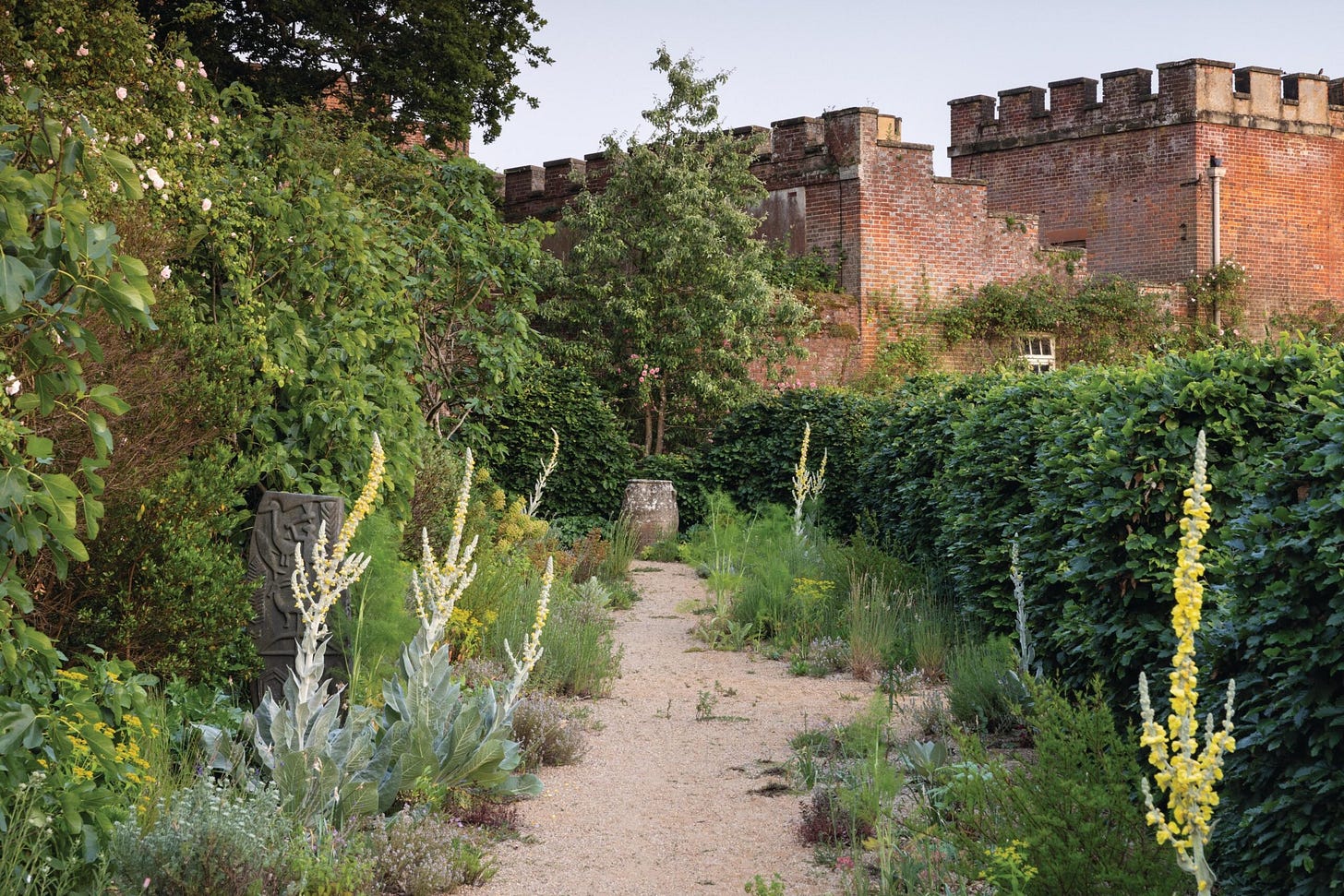Garden Disturbance: How to Think Like a Goat & Build Resilience
I watched a seminar given by Dan Pearson earlier today. Detailing the renewal and redesign of the Delos garden at Sissinghurst. And, as you can imagine, it’s conception, construction and planting, are all fascinating to hear about. But what struck me as a particularly interesting moment, was when the lauded landscape architect spoke about training the gardeners to take on the mindset of a Greek goat. This was punctuated by a short but awkward giggle from the audience.
What he went on to explain, was that this garden in the Kentish countryside of England, is meant to evoke the feeling of Delos, Greece. Where in among the sun bleached ruins of an ancient civilization, Mediterranean plants have reclaimed much of the space, except that which is kept in check by the grazing of the local goats. Nibbling back foliage in a way that’s impossible to recreate by carving the shrubbery into a ball.
When you think about pruning like a goat, it actually makes perfect sense. After all, it is these methods of disturbance that stimulate growth and renewal in the natural landscape. It’s what we’ve done as conventional gardeners, when we deadhead patunias or trim a boxwood into a perfect flat top hedge. You see, in a way, we’ve been pretending to be goats (or any other grazers) all along. But perhaps it’s time to loosen up and take some advice directly from the goats?
Delos at Sissinghurst (Dan Pearson, image Gardens Illustrated)
Ancient ruins on Delos, Greece
Grecian ruins echo through the naturalistic plantings at Delos, Sissinghurst.
Disruption & Disturbance
Landscapes and ecosystems are never static, they flux and change, constantly adapting to dynamic conditions. They are looped on a repeating circuit: pioneer, intermediary, climax, disruption/release and conserve. And try as we might, we can’t freeze them in any one spot on the loop, like for instance, when flowers are in bloom. When we do, we throw the natural sequence of succession out of balance.
Disruption = biomass reduction, nutrient cycling, keeps invasive in check, resets and allows regeneration to follow
Loss of Disturbance = Catastrophic loss
And by catastrophic loss, look no further than the unprecedented losses experienced across the globe in the last few years. Wildfires, floods and mass infestations continue to fill our news feeds, without fail year after year. One way that we can help rebalance ecosystems, is to make disruption and disturbance a part of our regular maintenance of our green spaces.
Keystone species play an important role in disturbance ecology (images Rewilding Europe)
Types of Disturbance
Disruption takes many forms in the landscape, some are large-scale and hopefully only occasional, like earthquakes, eruptions and storms, landslides and more. These, we don’t need to replicate as they continue as a part of the larger environment.
What we’re really talking about today, are the smaller-scale disturbances that happen at intermittent intervals.
Animal Activity: grazing, nesting, burrows, seasonal feeding patterns, trails, tunnels, dirt bathing
Including (but not limited too) creatures like: beaver, muskrat and deer, rabbit, gophers, ducks and other small rodents.
Not so coincidentally, the main nuisance (or easily hunted) species that we as humans tend to remove from ecosystems. Which is where we come in, taking over as a keystone species, where they are no longer present. The trick is keeping in mind, the variety of disturbances that each ecosystem needs.
Excuse me sir, may I watch you graze?
Mimicking Disturbance
When we’re discussing pruning like goat, that could mean several things. In my mind, I’m seeing a gardener with secateurs or maybe clippers. They’re taking small bite-sized chucks out at random intervals. But of course that’s not the only way to mimic vegetative disruption.
Removal of excess biomass, will open space up and make room for new life. Methods include:
Prescribed fire
Haying
Seasonal Mowing
Cutback and pruning
Also,
Letting people, pets and wildlife gather or walk through the space, literally trampling the ground, can help to spread and work annual seeds into the soil. While creating bald patches for ground nesting insects, including bees.
Creating or leaving hills and valleys, like burrows or dust bathing ruts (even if they're slight), alters soil moisture and encourages new micro climates.
Allowing various types of soils to exist in the same garden, not just building nutrient rich humus, encourages longer-lived more resilient plant and wildlife communities (as does limited use of water, fertility and chemicals). No animal spreads their manure evenly over the soil surface.
Meadow care through disruption, via scythes and prescribed burns. The kind of work and training that our friends at Drakägen trädgård are so good at
Mindset
Most of this, is really about changing how you see the landscape and your place (as a gardener) in it.
It should be noted, that we as humans are drawn to certain patterns. We like repetition and symmetry, it makes us feel more comfortable in our surroundings. As though we have some control over the things around us. But, this type of maintenance is about fighting those urges, and accepting that nature doesn’t revolve around just us.
Rather, considering gardens or a series of green spaces, as a mosaic of different ecosystems, that all fit together. Try applying a range of techniques in patches, at varied times or in different ways. And, also leaving some areas 'messy'; leaves and branches where they fall. All the while, Observing the natural processes and watching how things change in the larger scheme of things. Learning and adjusting techniques as you go. All of this, will help build diversity and create complex beautiful plantings that are ultimately resilient to climatic changes and larger disturbances when they occur.
And don't worry if you find that you still need to have some tidiness present. You can still get your fix by pruning and mowing more frequently along paths and in seating areas. Using elements like dead hedges and wood piles as sculptural focal points. And, mixing clean hardscape lines with loose naturalistic planting designs. It really is possible to incorporate some of these techniques in an style of garden.
Dead hedge 'nest' and waves of wood piles create pattern in this garden (Nigel Dunnett)
Where is This Leading?
The truth is, that accepting a more flexible approach to our gardens and their maintenance is leading us into the future. This paradigm shift allows for more green spaces, requiring fewer resources. With less labour, less water, less organic material all the while trapping more carbon, increasing habitat and giving us more time to revel in their beauty.
As an example, look at a project like the Knepp Walled Garden (James Hitchmough, Tom Stuart-Smith). Where, a hugely diverse grouping of plants has been unleashed in a single space and then allowed to grow. Overseen by a skilled head gardener (Charlie Harpur), picking and choosing to act as a keystone species might. Creating disturbance where and when he believes it’s necessary. For instance, when a Buddleia crops up, it may be left in place for a year or two, to see how things progress. If it can’t be out competed by the surrounding plant life and it stands ready to invade, it will be removed, cut (or gnawed if you will) to the ground, like a beaver or deer might. There are no steadfast rules, instead there’s an on-going dialog about what’s happening in the space, where decisions are made and results observed. All with a sense of fluidity and a spirit of experimentation.
"Unleashing a fabulous amount of genetic biodiversity, in this space. And then, sort of guiding its succession, and not being too fussy about it.” (T. Stuart-Smith)
Knepp Walled garden illustrating the benefits of a more thoughtful approach to maintenance (image Gardens Illustrated).
Lush diversity with less resources at Knepp Walled garden (image Gardens Illustrated)
Is this the future of gardening? Well, that’s up to you. As with all horticulture, these guidelines sit on a spectrum. Each space has what feels right for it and for you as the gardener. None of this is an all-or-nothing prospect. It’s all about questioning what we do as horticulturalists, and why we do it, and most importantly, is there a better way?
Let us know what you think, will you be thinking like a goat the next time your greenery needs a reduction?
-Sara-Jane & Alicia at Virens Studio
Virens is a Vancouver, Canada, based studio that specializes in ecological landscape and planting design, urban greening consultation and garden writing. Visit us on Instagram and Substack




